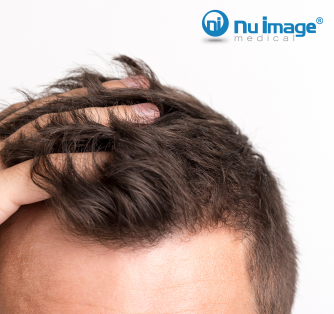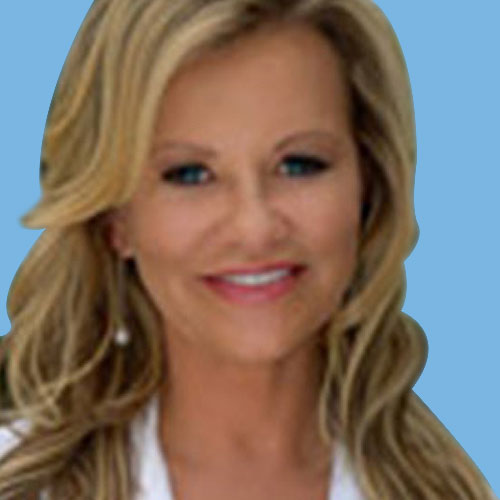Menu
Weight loss
Hormones
Sex
EXPLORE
MEET NU IMAGE MEDICAL
TREATMENTS
MEET NU IMAGE MEDICAL
TREATMENTS
MEET NU IMAGE MEDICAL
Typical Shedding or Problematic Balding?


If you’ve never had a problem maintaining a beautiful, thick head of hair, it can be alarming when you see the first few strands of hair clinging to your hairbrush or snagged on the shower drain. In times past, losing hair and facing balding was an issue that seemed to exclusively affect men, but the world has grown to see that thinning hair and alopecia affects both men and women almost equally. The fact that the world is on alert to the condition should be comforting, in spite of the fact that you are dealing with a very frustrating and embarrassing condition, However, before you start to panic and assume the worst, make sure you haven’t mistakenly given yourself a false diagnosis concerning your hair health. It is important to know when to seek treatment for your hair loss and when to chalk it up to normal hair health.
Just Another Bad Hair Day
For those who see several hairs pulled out each day because of washing or brushing, it shouldn’t raise too much alarm. Hair experts say that it is completely normal for people to lose about 100 hairs a day, as it simply a part of the natural growth cycle for hair. Hair has three growth stages, and at any time, about 90% of your hair can be cycling through the growth phase. Depending on genetics, this could anywhere from two to six years. Three percent of the remaining hair in considered in the intermediate phase. This is a static period where nothing occurs and usually lasts for about two weeks. After this time, hair enters the final cycle, in which the hair follicle will enter complete rest and the hair strand is completely formed. This accounts for between six to eight percent of the remaining hairs, and if a hair is pulled out during this phase, there will be dry, solid white material around the root. If your hair loss is more excessive than this, it reveals something more than healthy loss occurring and you need to find out what is going in.
Judging How Average Your Loss Is
The rate at which people lose hair is dependent on many factors. There are some changes in daily shedding simply because of ethnic background. For instance, Caucasians tend to lose the most hair, which is an average of 100 hairs a day. Individuals with African descent lose about 60 hairs each day, while Asians only lose around 60 hairs a day. Part of the explanation for this is the changes in hairs per square inch the has been noticed between ethnicities. Other factors can also impact shedding, as blonde hair has more shedding than hairs of brown or red because there are more hairs per square inch the lighter the hair color is. Depending on your ethnicity, you can establish an acceptable average amount for loss.
Take the Weather Into Account
Human hair can demonstrate patterns in loss just as animal hair can change with the seasons. According to the hair experts, there are two prime times throughout the year where loss increases. The first time period is between July and August. The hair grows in thick throughout the summer as it works to protect the scalp from the rays of the sun, and the hair starts to shed itself and lighten the load. However, new hair that grows in its place may experience the resting phase toward the later fall, early winter months, after which shedding increases. The next significant period of loss occurs from early November into mid-January. However, these periods are just temporary, and you should expect it grow back within three months.
Consider Potential Damage
The amount of hair that falls out on a daily basis could also be a result of the condition of the hair and scalp. When hair has been damaged, either through harsh chemical treatments or poor nutritional input, breakage is more likely to occur. Although this looks like the same thing as shedding if you check the fallen hair for the presence of the root. If you can visibly notice a raise toward the bottom of the strand, it indicated that the strand was damaged and did not make it through a complete hair cycle. Things that can bring damage include consistent use of harsh styling products, pulling your hair back when it is still wet, and overheating your hair through excessive blow-drying and styling elements.
Even if you have never noticed your hair loss, the first signs of loose strands shouldn’t cause you to panic. Keep an eye on any developing patterns with shedding, and evaluate these different factors that impact your hair health. If the condition persists and your loss is substantial, consult with your physician about potential causes and available treatments.
Nu Image Medical® offers a new and futuristic approach to achieving optimal health and wellness. The company has been a weight loss, anti-aging and wellness provider since 2004 and offers medically supervised programs for medical weight loss, peptides, erectile dysfunction, scream cream, and hair loss (NuDew)
This article is for informational purposes only and does not constitute medical advice. The information contained herein is not a substitute for and should never be relied upon for professional medical advice. Always talk to your physician about the risks and benefits of any treatment. Nu Image Medical may not offer the medications or services mentioned in this article.
